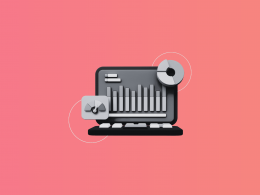I had the privilege of leading three different sessions at this year’s Scaling New Heights (SNH). I thought they were all good and relevant, and each session seemed to be enjoyable for everyone who attended – they were certainly fun for me to give! Although nothing compared to that awesome boat cruise organized by Synder, which was definitely one of the highlights of the conference!
But what has surprised me in the few weeks since SNH has been the amount of feedback and interest people have had in my session on the most essential apps for ProAdvisors. I did not expect that something so simple would resonate with so many. Maybe because there are so many choices and ways of approaching our work out there – it can be nice to get a bit of straightforward information and some foundational guidance to go with it.
So for those that missed it, a three-part recap – just for ecommerce: what needs are essential in general, what needs are essential for your client niche, and how to choose which tools address those essential needs best.
Essential needs: More than a list of single apps, think in terms of areas
I found out very fast: there is really no way to give a room full of accountants and bookkeepers from all walks of life and with all kinds of clients and firms a list of five essential apps. What is truly essential is never going to be the same for every ProAdvisor. But what I could offer is a breakdown of the essential areas of business that a person’s essential apps should probably cover.
We’ve all got the same basic challenge areas: Client Work, Team Work, and Practice Management.
Client Work: Involves things like storing data and documents, communicating with clients, and what I call ‘Data Transformation’, which is reporting along with anything else that allows you to represent data in changing or unique ways.
Team Work: Here we also have communication, but this time it is internal. Add to that time management and workflow tools, and you have the essentials for working with others.
Practice Management: This encompasses things like project management, but also the completely business-related versions of some of the areas already mentioned, like document storage and time management. Communication comes up again too with things like CRM and other ways to put all those projects on the road. To be direct, these are the apps that are the business of having a business.
I think it’s pretty easy to see that we all need some kind of coverage for all of these things. In my opinion, the secret is to choose great apps that also cover multiple areas or needs well.
Once you start thinking in those terms, it can become easy to see which app, or which few apps, are most essential to your business.
Essential apps in my practice
For me, QuickBooks Online and Synder form the backbone of my business. Why? Because they are essential not only to my Client Work but also to the way I am able to make my Team work. The truth is, I cannot imagine working with the ecommerce niche without Synder bridging the gap between what my clients are doing fast and furious out in the world, and what I need to do in a very organized and methodical way in my practice. Synder translates all the chaos from all the places into clear, understandable data. I could never track down all of that information and record it manually! This is how I am able to give my clients a clear, understandable view of their business – while still making a living myself.
But frankly, choosing essential apps isn’t just about my practice. And Synder wins on that front too. In part two, I’ll give you an overview of the five essential elements to consider when you are serving the ecommerce client base. And then later, how to make sure the apps you are choosing to help you deliver those essentials are the ones that will serve you and your clients best.
Ecommerce essentials: The clients you serve and what they need most
In part one, I shared a new way to view apps and their place in your practice. It’s not just about the app stack, it’s about covering the essential areas of need for your clients, your team, and your practice as a business itself.
But I am an ecommerce industry specialist. And maybe you are, too. So, what we need at some point is going to depend not only on what our clients need from us, but also on what we need from them, and how all of that happens. For my presentation at Scaling New Heights, I interviewed a number of colleagues – each one of them an expert who concentrates on serving clients from a particular industry. What each of them listed as necessary was wildly different from each other. For example: accounts receivable solutions really mattered to my legal experts, but my restaurant expert hardly ever had clients who were dealing with A/R.
It was fascinating to me to see the differences and I think equally interesting to the attendees. So, I thought I might share some typical traits of ecommerce clients and the resulting needs that I see most in my work with them.
- Tech-savvy: You can usually count on your ecommerce clients being tech-forward, or at least not tech-averse. This means that you are in a good position to implement solutions with them and they might be easier to train. The downside can sometimes be that they are constantly adding new things.
- Multi-platform: Not unrelated to their comfort with tech, there are usually a lot of places where ecommerce clients are selling things. This typically means a lot of revenue flows dumping into sometimes multiple banks – not to mention the alternative ways to pay on each of those selling platforms. You get the picture.
- Sales tax heavy: This doesn’t only mean that perhaps what is being sold is sales tax diverse, it also usually involves where things are being sold playing a part in all of the sales tax complications. Anyone working with ecommerce clients should expect to deal closely with either sales tax OR the tool or app will deal with sales tax.
- Income confusion: Probably the biggest shortcut I find my ecommerce clients take in terms of understanding their business is the one where deposited income is seen as the whole income picture. They often do not know how much they are selling, but only what they are netting after fees and taxes and deductions and returns.
- Relationship to inventory: In some ways, this is the main divide between different types of ecommerce clients. Any client dealing with inventory is likely dealing with it in more than one place and shipping to more than one area. So, just like income and sales tax, keeping all the transactions, applicable sales taxes, returns, and other events straight and recorded correctly can be a really big issue.
So we’ve got five main areas that should be considered for probable app help for my ecommerce clients. But how do we go about choosing the app or apps we will use for each of these key areas? In part three, I will share how to make finding the right tool an easier, and more successful project – one that doesn’t have to take all year.
The right tools: Identifying the apps you want for the help you need most
I think the process of finding the right app is actually pretty similar for any niche: admit how you really work, identify what you really need, and then shop for what you really want.
So far, we’ve discussed a lot discovering how you really work and identifying the help you’ll really need to serve your ecommerce clients well. So how can you actually find the tools to do that? Is there a secret to making the search for the right tools a bit easier and more straightforward? There are a LOT of apps out there – how can you choose without turning the choice of your next app into another full-time job?
Here are some of the tips I’ve shared with fellow bookkeepers and accountants a number of times, including recently at Scaling New Heights.
Identify your deal breakers
This is so key and so obvious. And of course, we often overlook doing it! You have to decide what app or workflow or whatever that you (or your clients) aren’t willing to change.
For instance, I use QuickBooks Online. I cannot imagine not using it and I don’t want to have to use more than one general ledger (GL) program in my practice. If an app needs to integrate with a GL but cannot integrate with QuickBooks Online fully and well, that isn’t the app for me.
The reverse is true, too. One of the reasons I like Synder is because I can choose either the daily summary method or the per transaction method of sales entry for each of my clients. Synder can automate things either way. So, I do not have to learn or deal with more than one sales entry integration depending on the sales entry needs of my clients. It allows me to take on more diverse clients and even more importantly, stay with clients as their needs change without having to change the core tools I am using.
For me, QuickBooks Online and Synder are deal breakers. I need any OTHER app I choose to be either compliant with them or at least need it not to clash with them.
Identify your key players
When deciding between multiple apps that do similarly well on functionality, don’t forget to check in on how they are handling you and your team! It is VERY valuable to know your needs around topics like internal communications, security, view-only access, mobile access, accountant views and platforms, and even levels of client access.
Finding an app that will allow you to keep your current access tiers and workflows humming is great. But going in prepared and being able to identify which app will make those things even better is fantastic!
In short, keep Key Positions and Key Functionality top of mind when looking for essential apps.
Benefits vs The Big Picture
This is a larger question, but an important one. You find what you think might be a great upgrade to your essential apps ecosystem. Ask yourself: Does what this solution provides justify the changes my firm and my clients will have to make it work?
It can be easy to forget that while an app might make one thing easier, the overall workflow may get much harder – more connections between essential parts mean more connections that have to be monitored and even reconciled on a regular basis. Is the solution going to leave you and your firm and your clients more streamlined and better working AS A WHOLE?
One of the great things about having QuickBooks Online at the center of my essential apps is that sometimes even if an app doesn’t integrate directly with another essential app, they can talk to each other through QuickBooks Online.
For instance, using Synder with QuickBooks Online means that if I automate sales by transaction, I can track my clients’ inventory from all those platforms in QuickBooks Online. Still, QuickBooks Online is fairly basic in its inventory functions. But a dedicated inventory platform, like Katana, is specialized. And it also integrates with QuickBooks Online. Because they can relate through QuickBooks Online, I don’t necessarily need Synder and Katana to be ‘directly’ integrated to get them to automatically stay in sync.
Closing thoughts
Ultimately, it comes down to this: this is why you are the expert. You know your clients, you know your team, you know your processes. Only you can decide where they work best and where they need work. Approach identifying your own essential apps with this mindset firmly in place, and the tips and insights discussed in this article can absolutely help you translate your knowledge into some great choices and improved workflows.

.png)




